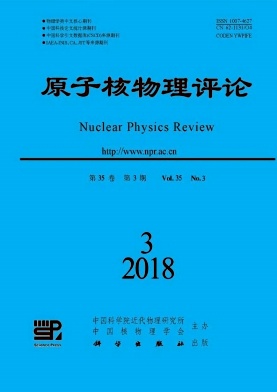|
[1]
|
PIPIDIS A, RILEY M A, SIMPSON J, et al. Phys Rev C, 2005, 72:064307. |
|
[2]
|
FAISAL J Q, HUA H, LI X Q, et al. Phys Rev C, 2010, 82:014321. |
|
[3]
|
CAMPBELL D B, LAIRD R W, RILEY M A, et al. Phys Rev C, 2007, 75:064314. |
|
[4]
|
SUN Y, WALKER PHILIP M, XU F R, et al. Phys Lett B, 2008, 659:165. |
|
[5]
|
REGAN P H, BEAUSANG C W, ZAMFIR N V, et al. Phys Rev Lett, 2003, 90:152502. |
|
[6]
|
YANG J, WANG H L, CHAI Q Z, et al. Prog Theor Exp Phys, 2016, 063:D03. |
|
[7]
|
SHEN S F, CHEN Y B, XU F R, et al. Phys Rev C, 2007, 75:047304. |
|
[8]
|
REGAN P H, WHELDON C, YAMAMOTO A D, et al. Acta Physica Polonica B, 2005, 36:1313. |
|
[9]
|
HAYAKAWA T, TOH Y, OSHIMA M, et al. Eur Phys J A, 2002, 15:299. |
|
[10]
|
CHEN L, ZHOU X H, ZHANG Y H, et al. Phys Re C, 2011, 83:034318. |
|
[11]
|
HAYAKAWA T, OSHIMA M, HATSUKAWA Y, et al. Nucl Phys A, 1999, 657:3. |
|
[12]
|
GRANJA C, POSPÍŠIL S, APRAHAMIAN A, et al. Phys Rev C, 2004, 70:034316. |
|
[13]
|
SUGAWARA M, MITARAI S, KUSAKARI H, et al. Nucl Phys A, 2002, 699:450 |
|
[14]
|
ANDREA JUNGCLAUS, BINDER B, DIETRICH A, et al. Phys Rev C, 2003, 67:034302. |
|
[15]
|
SIMPSON J, BUTLER P A, FORSYTH P D, et al. J Phys G:Nucl Phys, 198410:383. |
|
[16]
|
WANG S T, ZHOU X H, ZHANG Y H, et al. Phys Rev C, 2011, 84:017303. |
|
[17]
|
VLASTOU R, PAPADOPOULOS C T, SERRIS M, et al. Nucl Phys A, 1994, 580:133. |
|
[18]
|
BROCKSTEDT A, LYTTKENS-LINDÉN J, BERGSTRÖM M, et al. Nucl Phys A, 1994, 571:337. |
|
[19]
|
CROMAZ M, DEGRAAF J, DRAKE T E, et al. Phys Rev C, 1999, 59:2406. |
|
[20]
|
SCHMIDT K A, BERGSTRÖM M, HAGEMANN G B, et al. Eur Phys J A, 2001, 12:15. |
|
[21]
|
FEWELL M P, JOHNSON N R, MCGOWAN F K, et al. Phys Rev C, 1988, 37:101. |
|
[22]
|
SELIN E, HJORTH S A, ANDRYDE H. Physica Scripta, 1970, 2:181. |
|
[23]
|
ARCHER D E, RILEY M A, BROWN T B, et al. Phys Rev C,1998, 57:2924. |
|
[24]
|
BLUME K P, HUBEL H, MURZEL M, et al. Nucl Phys A, 1987, 464:445. |
|
[25]
|
CULLEN D M, REED A T, APPELBE D E, et al. Nucl Phys A, 2000, 673:3. |
|
[26]
|
ROY N, JÓNSSON S, RYDE H, et al. Nucl Phys A, 1982, 382:125. |
|
[27]
|
RICHTER L, BACKE H, KANKELEIT E, et al. Phys Lett B, 1977, 71:74. |
|
[28]
|
NAZAREWICZ W, DUDEK J, BENGTSSON R, et al. Nucl Phys A, 1985, 435:397. |
|
[29]
|
NAZAREWICZ W, WYSS R, JOHNSON A. Phys Lett B, 1989, 225:208. |
|
[30]
|
SATULA W, WYSS R. Phys Rev C, 1994, 50:2888. |
|
[31]
|
XU F R, SATULA W, WYSS R. Nucl Phys A, 2000, 669:119. |
|
[32]
|
DE VOIGT M J A, DUDEK J, SZYMAŃSKI Z. Rev Mod Phys, 1983, 55:949. |
|
[33]
|
EMLING H, GROSSE E, KULESSA R, et al. Nucl Phys A, 1984, 419:187. |






 甘公网安备 62010202000723号
甘公网安备 62010202000723号 DownLoad:
DownLoad: